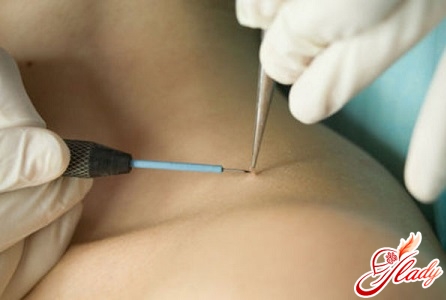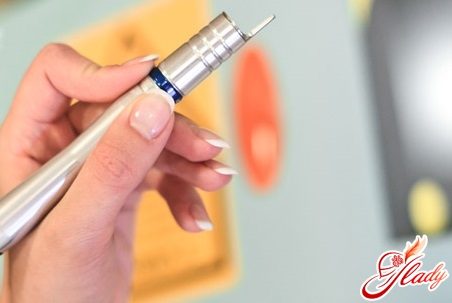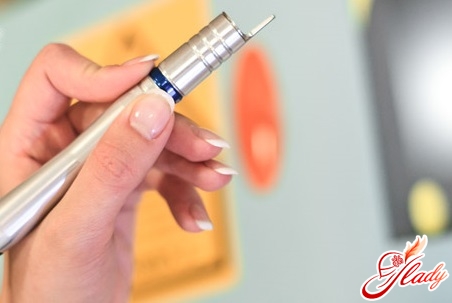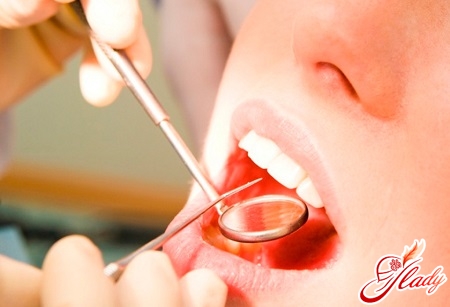 An infection that may be dormantform for a very long time in the human body, and when its protective functions are reduced, it becomes active in the form of rashes, called herpes. Modern medicine distinguishes two types of the virus: HSV-1 and HSV-2. But at the moment, its diagnosis and treatment have serious problems, since the natural predisposition of the virus to mutation complicates its definition. And a qualitative approach to the analysis of the results of scientific research and the lack of a generally accepted diagnostic system significantly hinders development in this area.
An infection that may be dormantform for a very long time in the human body, and when its protective functions are reduced, it becomes active in the form of rashes, called herpes. Modern medicine distinguishes two types of the virus: HSV-1 and HSV-2. But at the moment, its diagnosis and treatment have serious problems, since the natural predisposition of the virus to mutation complicates its definition. And a qualitative approach to the analysis of the results of scientific research and the lack of a generally accepted diagnostic system significantly hinders development in this area.
Cause of infection
The separation between the two types of virus is quiteconditional, since a mixed type is often observed during its diagnosis. The first type of infection (HSV-1) includes lesions of skin areas on the face and upper limbs. The second type (HSV-2) is characterized by the appearance of rashes on skin areas in the genital area. Once penetrated through the skin or mucous membrane into the nerve nodes (ganglia), the virus remains there forever. When a favorable background arises, associated with a decrease in resistance to infections of various kinds, it reveals itself in an obvious form. Existence inside the cell provides it with all the necessary resources and components for active reproduction. At the same time, it subjugates all the synthesizing systems of the cell, forcing it to produce substances for the construction of new forms of the virus. The reasons for the appearance of herpes on the lips are different. Very often, primary infection occurs through contact, which can be direct, airborne, or through household items and hygiene (shared towels, dishes, things). In addition, there are frequent cases when the fetus is infected with the herpes virus from the mother while still in the womb. The main factors for its occurrence are:
- Subcooling or strong overheating of the body
- Long time in the sun
- Somatic diseases (flu, cold, diabetes)
- General body fatigue
- Depletion of the body against a background of prolonged illness or strict diets
- Critical days
- Intoxication
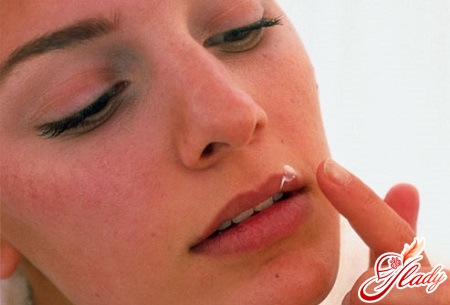
Clinical picture of the onset of herpes
After awakening, the virus spreads along the departing nervestrigeminal plexus goes to the lips, oral mucosa or other organs where the nerve endings end. After infection, the incubation period for its manifestation in the form of rashes is up to 21 days. In its development, simple herpes goes through 4 phases. First stage. At this point, the health of both the primarily infected and the permanent carrier of the virus deteriorates sharply. Weakness, chills, drowsiness, fever and muscle pain appear. Itching often begins in places where the virus should appear (skin in the corners of the mouth, the inner surface and red borders of the lips, wings of the nose, nasolabial folds, cheeks). The main harbingers of the onset of infection are reddening of the skin at the site of the future relapse, pain and itching. Second stage. Next, small painful bubbles begin to appear on the skin - vesicles filled with cloudy liquid. With further development of the infection, they increase in size. If treatment is not determined at this stage, then herpes tends to further damage the skin. Third stage. When the vesicle is filled to the maximum, it bursts, and a colorless, cloudy liquid appears on the surface, containing billions of viral particles. At this point, the carrier of the virus is extremely dangerous, since infection can occur through the release of a huge number of herpes cells into the environment. In this case, the patient experiences unpleasant sensations in the ulcerated areas. Fourth stage. At this stage, the erosive areas are covered with a crust, they dry out, heal and disappear. Special treatment is also required to speed up this stage. The occurrence of a herpes simplex viral infection is sometimes accompanied by complications. The most severe in this case can be inflammation of the meninges. With a mild course of the disease, the rashes persist for up to 2 ... 3 weeks. The return of relapses with reduced immunity is from 3 to 6 times a year.
Diagnosis of herpesvirus infection
Diagnosis is usually made atbased on complaints and external examination of the patient, taking into account laboratory tests. Since the virus tends to have an atypical asymptomatic course, laboratory methods are decisive in the diagnosis of herpes infection. Currently, it is carried out in the following areas:
- Virological method
- DNA Diagnostics
- Serodiagnostics
- Immunofluorescence method
- Cytological method
Virological method.To perform this analysis, you will need to have the contents of a vesicle or a deep scraping of erosion, mucous membranes. The obtained material for isolating the virus is implanted on the growing chorioallantoic membrane of a 12-day-old chicken or rabbit embryo, monkey kidney tissue, or a human fibroblast. After 2-3 days, if the reaction is positive, the appearance of cytopathic changes characteristic of infection can be observed. The final identification of the virus is carried out by a neutralization reaction on chicken embryos, mice, or cell cultures through the introduction of antiherpetic immune serums. DNA diagnostics. To determine the presence of the virus, polymerase chain reaction (PCR) is used. This method helps to identify the infection only at the time of its occurrence and find out what type is present in the body. To do this, material is taken for analysis with a special brush from erosive areas. Serodiagnostics. The method is based on the detection of specific antibodies to virus cells found in the blood serum. Antibodies appear in the blood on the 4th…7th day after the primary infection, their maximum quantity is reached after 2…3 weeks, and this quantity is maintained for life. To distinguish the primary episode from a relapse, it is very important to know the increase in antibodies, so the patient gives blood from a vein to determine antibodies to HSV-1 and HSV-2. The presence of IgG antibodies in the test material - herpes is recurrent, and the determination of IgM antibodies indicates that this is a primary episode. The immunofluorescence method involves determining the nature and quantity of antibodies, the intensity and area of specific luminescence in the test material. To obtain such material, it is necessary to take smears and then dry them in acetone. The study is analyzed under a fluorescent microscope, after applying water or oil immersion to the dried material and pre-treating it with a fluorescent preparation. The analysis will be positive if there are at least three morphologically unchanged epithelial cells with a specific fluorescent color and a typical localization in the nucleus for the virus. Cytological method. The most accessible and technically simple method is considered to help identify morphological abnormalities in infected cells. Its efficiency reaches 75% and is more effective than virological analysis. For this, smears are stained using the Romanovsky-Giemsa or Unna method, after which morphological changes in the cells are visible.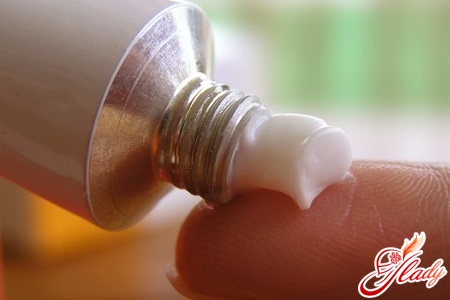
Treatment of herpes simplex on the lips
Treatment of recurrent simpleherpes consists in the patient's immunorehabilitation, which reduces relapses and leads to stable remission. However, monotherapy, which includes taking medications and ointments, creates a vicious circle, and stressful situations only worsen the condition. Therefore, only complex treatment will allow the process to be stopped in a short period and the patient's condition to be stabilized. First of all, herpes treatment has five main directions:
After the affected area appears on the skinarea, it is necessary to undergo a course of suppressors: Acyclovir, Valtrex, the duration of which is 5 ... 7 days, which sharply reduces the number of viruses in the body. Simultaneously with taking medications for high-quality treatment, 5% acyclovir ointment should be used on the affected areas for 7 days at least 5 times. Further treatment will be aimed at strengthening the immune system and consists of taking immunotherapeutic drugs (ridostin, cycloferon, likopid). The duration of taking drugs depends on the patient's condition and the severity of the infection. In special cases, treatment is carried out with alpha interferon with a daily dose of 2,000,000 IU twice a day. In severe forms of herpes on the lips, it is worth considering vaccination. Two months after the end of complex treatment, intradermal administration of the herpes vaccine is possible. To achieve stable remission, it will be necessary to select an individual regimen, which will include the amount of a single dose and the frequency of its administration. Preventive measures for herpes simplex consist of simple recommendations that are not particularly difficult to follow:
- To avoid infection with the herpes virus will help personal hygiene, which includes hand washing and the use of individual items of everyday life.
- Try to avoid contact with a person who has external manifestations of herpes.
- Strengthening the immune system.
- Refuse to drink alcohol, coffee and smoking.




